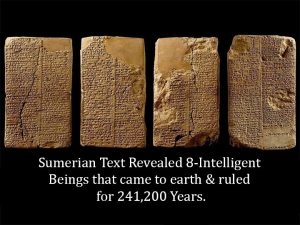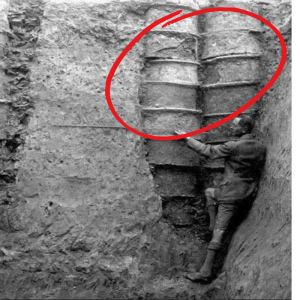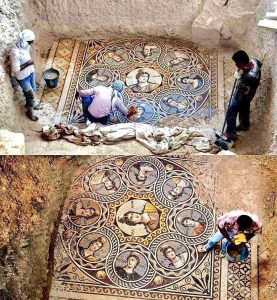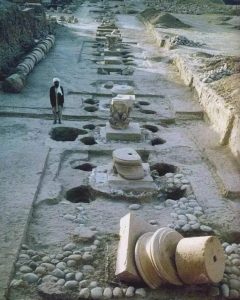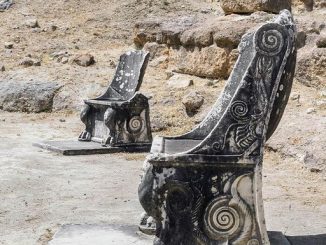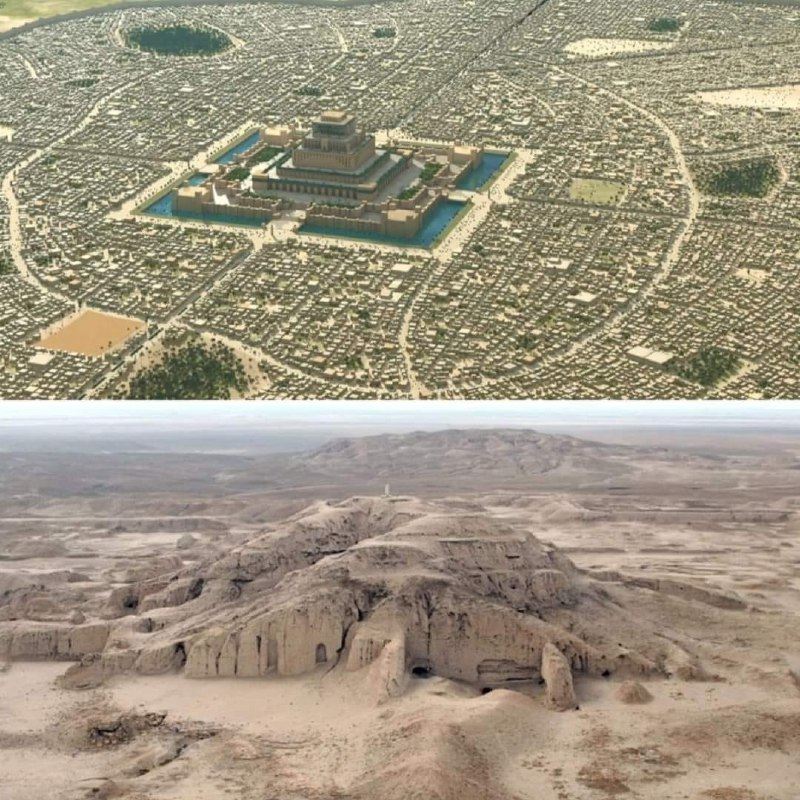
Nestled along the banks of the Euphrates River in southern Iraq lies the ancient Sumerian city of Uruk, a place shrouded in the mists of time yet holding the key to unlocking the secrets of civilization’s dawn. Dating back to 6500-4000 BC, Uruk is widely regarded as the first civilized city in the world, a bustling metropolis teeming with life, culture, and innovation. Discovered in 1849 by the pioneering archaeologist William Loftus, Uruk has since captured the imagination of scholars and historians alike, offering a tantalizing glimpse into humanity’s earliest urban achievements.
The Flourishing Heart of Ancient Civilization
- A Hub of Innovation and Progress: Uruk emerged as a beacon of progress and innovation in the ancient world, boasting advanced architecture, sophisticated urban planning, and a thriving economy fueled by trade and commerce. Its monumental structures, such as the legendary ziggurat—a massive stepped pyramid dedicated to the city’s patron deity, Inanna—testify to the ingenuity and engineering prowess of its inhabitants. Additionally, Uruk’s extensive canal systems and irrigation networks facilitated agricultural productivity, ensuring the city’s prosperity and sustenance.
- Cultural Riches and Artistic Splendor: Beyond its architectural marvels, Uruk was a vibrant cultural center, nurturing the arts, literature, and religious practices that defined Sumerian civilization. The city’s temples, palaces, and public spaces were adorned with exquisite artworks, including intricately carved reliefs, clay tablets inscribed with cuneiform script, and ornate pottery vessels adorned with symbolic motifs. Uruk’s cultural legacy continues to inspire awe and admiration, offering valuable insights into the beliefs, rituals, and daily life of its ancient inhabitants.
- The Epic of Gilgamesh: One of the most enduring legacies of Uruk is its association with the Epic of Gilgamesh, one of the oldest known works of literature in human history. This epic poem, composed in the Akkadian language around 2100 BC but based on earlier Sumerian legends, tells the story of Gilgamesh, the legendary king of Uruk, and his quest for immortality. Through its exploration of themes such as friendship, mortality, and the human condition, the Epic of Gilgamesh continues to resonate with audiences worldwide, offering timeless wisdom and insight into the human experience.
- Archaeological Discoveries and Ongoing Research: Archaeological excavations at Uruk have yielded a wealth of artifacts and insights into the city’s ancient past, shedding light on its urban layout, social organization, and economic activities. From monumental architecture to everyday household items, these discoveries paint a vivid picture of life in Uruk and its significance in the development of early civilization. Ongoing research and interdisciplinary collaborations continue to expand our understanding of Uruk and its role in shaping the course of human history.
Preserving the Legacy of Uruk
In conclusion, the ancient city of Uruk stands as a testament to the ingenuity, creativity, and resilience of humanity’s earliest urban communities. From its monumental architecture to its cultural achievements, Uruk represents a milestone in the journey of civilization, shaping the course of human history and inspiring generations to come. As archaeologists and scholars continue to unravel the mysteries of this ancient metropolis, we are reminded of the importance of preserving and celebrating our shared heritage, ensuring that the legacy of Uruk lives on for future generations to explore and appreciate.


